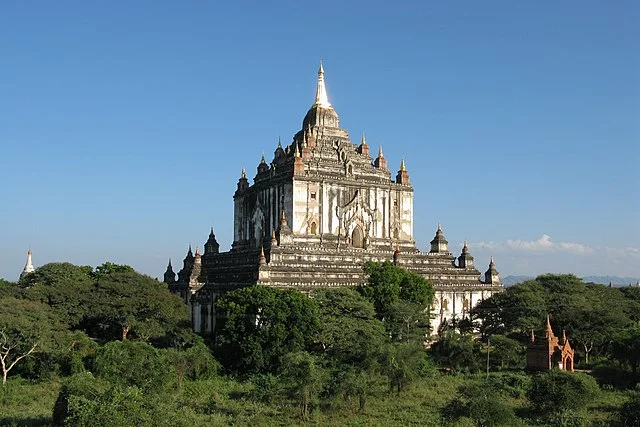Thatbyinnyu Temple is one of the most prominent monuments in the ancient city of Bagan, Myanmar. Built during the reign of King Alaungsithu in the 12th century AD, it is considered a masterpiece of Burmese temple architecture. The temple stands as a symbol of the region’s architectural achievement and religious devotion.
Get your dose of History via Email
Historical Context
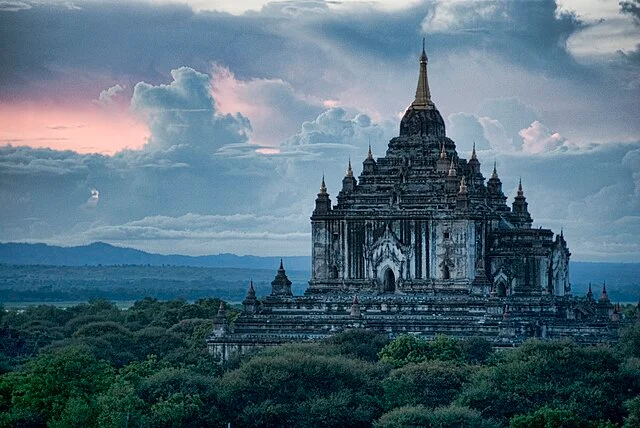
King Alaungsithu, who ruled from 1113 to 1167 AD, commissioned the construction of Thatbyinnyu Temple. It is believed that he constructed the temple to honor the Buddha and to demonstrate his devotion to Theravada Buddhism. The temple’s name, “Thatbyinnyu,” translates to “omniscient,” a reference to the Buddha’s all-knowing nature.
Architecture
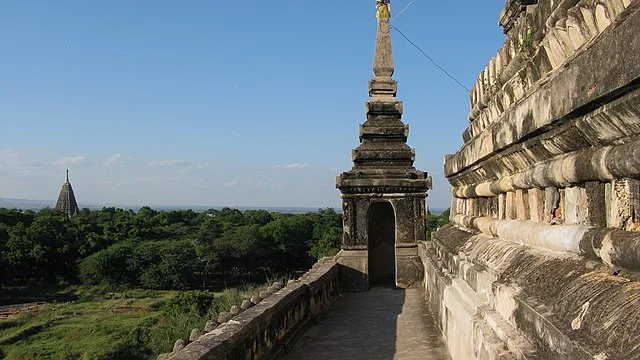
Thatbyinnyu Temple stands at a height of 61 meters (200 feet), making it one of the tallest structures in Bagan. Its design reflects the typical characteristics of Bagan-era temples. The structure is a multi-storied, pyramid-like temple with a large central spire, surrounded by smaller spires. The temple is built using sandstone and brick, materials commonly used in the construction of Bagan temples.
The temple has a square base, and its walls are decorated with numerous Buddha images. These images are significant in depicting the temple’s religious purpose, as they represent the Buddhist belief in the enlightenment of the Buddha. The interior of the temple is divided into two main chambers, one at the ground level and the other at the upper level. The upper chamber contains a large image of the seated Buddha, while the lower level holds smaller shrines.
Artistic Significance
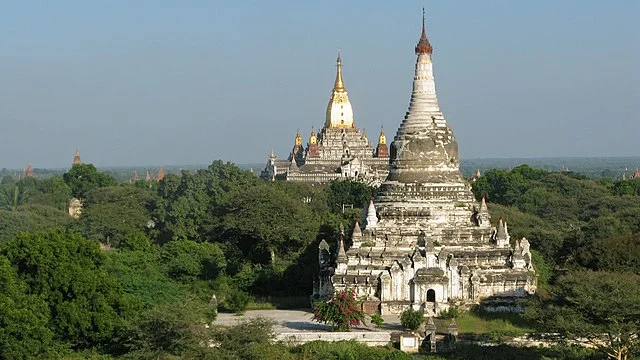
The temple’s artwork is a crucial part of its significance. The walls are adorned with intricate carvings and frescoes depicting scenes from the Buddha’s life. These works of art are important not only for their aesthetic value but also for their historical importance in understanding the religious beliefs of the time.
Religious Importance

Thatbyinnyu Temple continues to serve as a place of worship. Pilgrims visit the site to offer prayers and observe the Buddha’s teachings. The temple is part of a broader religious complex that includes many other temples and stupas in the Bagan region, which is known for its impressive collection of over 2,000 religious structures built between the 11th and 13th centuries AD.
Preservation and Conservation
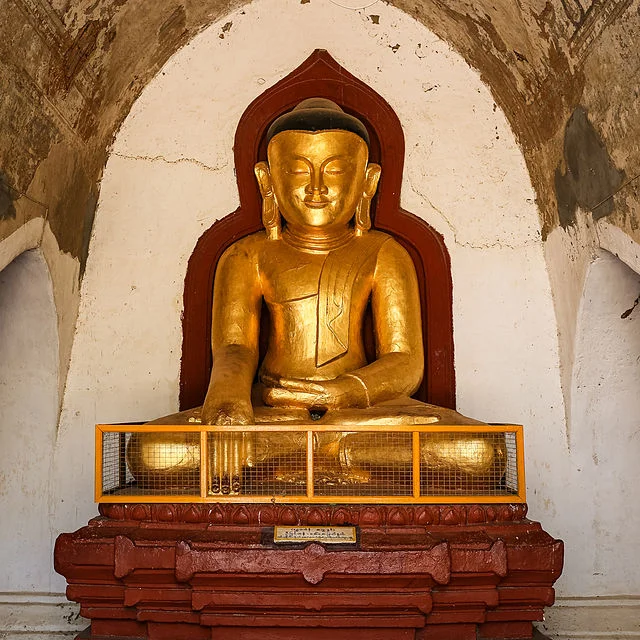
Like many of the temples in Bagan, Thatbyinnyu Temple has faced challenges due to natural disasters, such as earthquakes, and human activity. Efforts to preserve the temple have been ongoing, especially after the 2016 earthquake that caused significant damage to the region’s heritage sites. The government of Myanmar and international organizations have worked to restore the temple and protect it for future generations.
Conclusion
Thatbyinnyu Temple stands as a testament to the architectural, artistic, and religious achievements of the Bagan period. Its size, intricate artwork, and enduring significance highlight its importance as both a historical and religious monument. As one of the tallest and most impressive structures in Bagan, it remains a symbol of the cultural legacy of ancient Myanmar.
Source:

